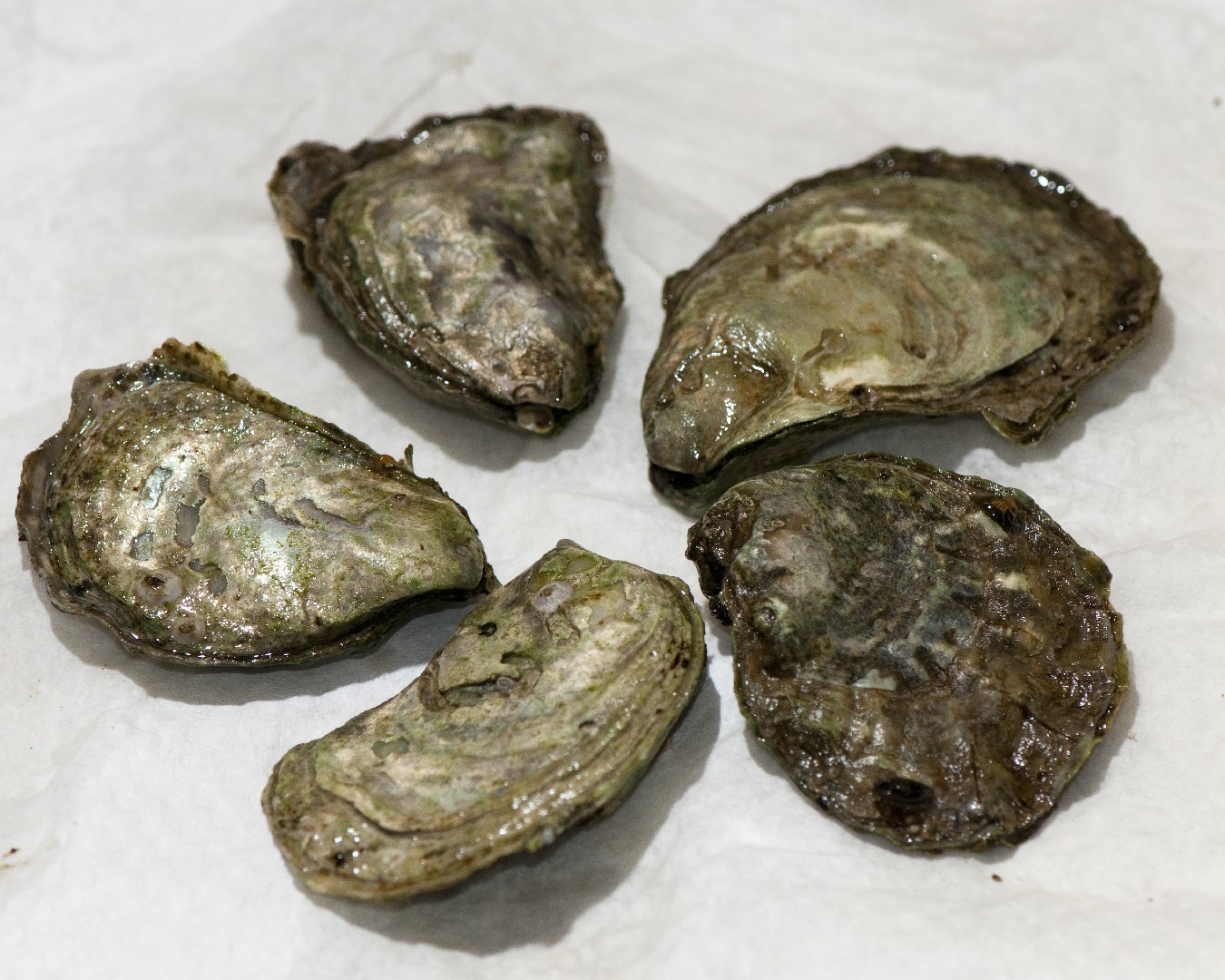Olympia oyster
A species of Oysters Scientific name : Ostrea lurida Genus : Oysters
Olympia oyster, A species of Oysters
Botanical name: Ostrea lurida
Genus: Oysters
Content
Description People often ask
 Photo By VIUDeepBay , used under CC-BY-2.0 /Cropped and compressed from original
Photo By VIUDeepBay , used under CC-BY-2.0 /Cropped and compressed from original Description
This bivalve is approximately 6 to 8 centimetres (2.4 to 3.1 in) in length. The shell can be rounded or elongated and is white to purplish black and may be striped with yellow or brown. Unlike most bivalves, the Olympia oyster's shell lacks the periostracum, which is the outermost coating of shell that prevents erosion of the underlying shell. The color of the oyster's flesh is white to a light olive green. Ostrea lurida oysters lie with their left valve on the substrate, where they are firmly attached. Unlike most bivalves, oysters do not have a foot in adulthood; they also lack an anterior adductor muscle and do not secrete byssal threads, like mussels do. Olympia oysters are suspension feeders, meaning they filter their surrounding water and screen out the phytoplankton they feed on. Olympia oysters filter between 9 and 12 quarts of water each day, but is highly dependent on environmental conditions. This is an essential function to keeping marine waters clean. Oyster beds also provide shelter for anemones, crabs, and other small marine life.
* Disclaimer: The judgment on toxicity and danger is for reference only. We DO NOT GUARANTEE any accuracy of such judgment. Therefore, you SHALL NOT rely on such judgment. It is IMPORTANT TO SEEK PROFESSIONAL ADVICE in advance when necessary.
People often ask
Where are olympia oyster from?
How big does olympia oyster get?
What does olympia oyster eat?
What eats a olympia oyster?
Scientific Classification
Phylum
Molluscs Class
Bivalve shell Order
Oysters and allies Family
True oysters Genus
Oysters Species
Olympia oyster